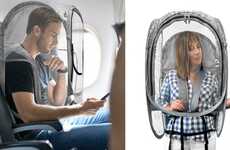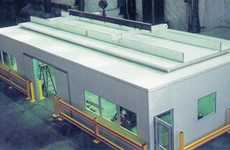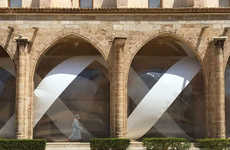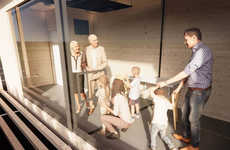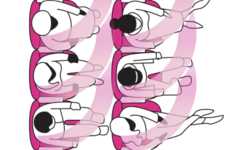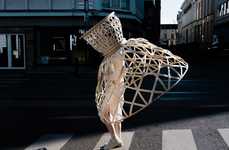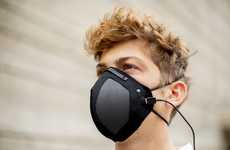
Gregory Quinn Boasts the SheltAir as a Solution to Isolate Patients
Kalin Ned — March 31, 2020 — Art & Design
References: gregoryquinn & dezeen
SheltAir is an innovation developed by German architectural engineer Gregory Quinn and it seeks to offer a solution to one of the many problems that the COVID-19 pandemic poses. It is essentially "domed bio-containment pods [that can] erect [thanks to the use] of inflatable cushions."
SheltAir is intended to help those who have been diagnosed with COVID-19 to better isolate. The product is flat-pack to maximize portability and adaptability. It consists of a gridshell of plastic rods and PVC-coated polyester that is to be inflated. Since the fabric is also SheltAir's "architectural envelope," Gregory Quinn heat-welds the outer skin in order to ensure the proper isolation from the outside.
SheltAir allows for hospitals to be a safer environment for doctors and visitors by minimizing possible exposure.
Image Credit: Dezeen
SheltAir is intended to help those who have been diagnosed with COVID-19 to better isolate. The product is flat-pack to maximize portability and adaptability. It consists of a gridshell of plastic rods and PVC-coated polyester that is to be inflated. Since the fabric is also SheltAir's "architectural envelope," Gregory Quinn heat-welds the outer skin in order to ensure the proper isolation from the outside.
SheltAir allows for hospitals to be a safer environment for doctors and visitors by minimizing possible exposure.
Image Credit: Dezeen
Trend Themes
1. Flat-pack Bio-containing Pods - Developing flat-pack bio-containing pods to maximize portability and adaptability presents a disruptive innovation opportunity that can revolutionize the way medical facilities handle contagious patients in remote or hard-to-reach places.
2. Inflatable Medical Enclosures - Creating inflatable medical enclosures can offer a disruptive innovation opportunity to provide quick, temporary, and cost-effective solutions for containing infectious diseases in emergency situations like a pandemic.
3. Heat-welded Architectural Envelopes - Incorporating heat-welded architectural envelopes in building designs can present a disruptive innovation opportunity to build isolation rooms, medical facilities, and other critical structures that are safer, and more secure and environmentally friendly.
Industry Implications
1. Healthcare Industry - The healthcare industry can implement bio-containing gridshell pods to enhance patient care, increase hospital readiness, and reduce the transmission of contagious diseases in public and hospital settings.
2. Emergency Response Industry - The emergency response industry can adopt inflatable medical enclosures to provide temporary isolation for contagious patients and fast response to emergency outbreaks like pandemics, natural disasters, and biological spills.
3. Architectural Design Industry - The architectural design industry can leverage heat-welded architectural envelopes to create cost-effective, safe, and resilient isolation rooms and medical facilities in remote or hard-to-reach areas, and increase building energy-efficiency and environmental sustainability.
4.9
Score
Popularity
Activity
Freshness


